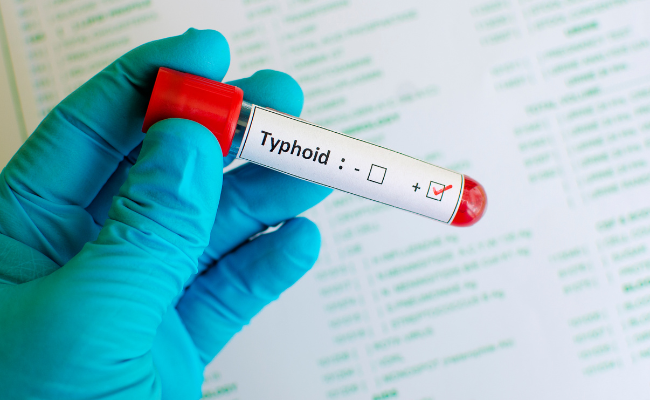How to Treat Typhoid Fever?
- December 28, 2023
- No Comments

What is Typhoid Fever?
Typhoid fever, a potentially life-threatening bacterial infection, is caused by Salmonella Typhi. This disease spreads through contaminated food and water, leading to a systemic infection impacting various organs. The incubation period is typically one to two weeks, and symptoms can vary in intensity. Also known as enteric fever, typhoid infects the small intestines, causing high fever and stomach pain. Paratyphoid fever, caused by Salmonella Paratyphi, shares similarities with typhoid but presents milder symptoms. It's crucial to note that S. Typhi and S. Paratyphi differ from the Salmonella bacteria causing salmonellosis, a common form of food poisoning.
Why is Typhoid Fever a Concern?
Typhoid fever poses a significant public health concern due to its potential for widespread outbreaks, especially in areas with inadequate sanitation and limited access to clean water. The bacteria responsible for typhoid can thrive in contaminated water sources and can be transmitted through the fecal-oral route. Travelers to regions with poor sanitation are particularly at risk.
How is Typhoid Fever Diagnosed?
Diagnosing typhoid fever involves a combination of clinical evaluation, medical history, and laboratory tests. Common symptoms include sustained high fever, abdominal pain, headache, and a rose-colored rash. However, these symptoms can mimic those of other illnesses, making an accurate diagnosis challenging without proper testing. Laboratory tests, such as blood cultures and stool cultures, are crucial for confirming the presence of Salmonella Typhi. Blood cultures are often more reliable in the early stages of the disease, while stool cultures may be useful in later stages when bacteria shed in the stool.
Treatment Solutions for Typhoid Fever:
- Antibiotic Therapy: The cornerstone of treating typhoid fever is antibiotic therapy. Commonly prescribed antibiotics include ciprofloxacin, ceftriaxone, and azithromycin. The choice of antibiotic depends on factors such as the severity of the illness, antibiotic resistance patterns in the region, and individual patient considerations.
- Supportive Care: In addition to antibiotics, supportive care plays a crucial role in managing typhoid fever. This includes maintaining proper hydration through oral rehydration solutions or, in severe cases, intravenous fluids. Adequate rest and a nutritious diet also aid in the recovery process.
- Isolation and Hygiene: Given the contagious nature of typhoid fever, it is essential to practice strict hygiene measures to prevent its spread. Patients with confirmed or suspected typhoid should adhere to isolation precautions, and caregivers must follow strict handwashing protocols.
Benefits of Prompt Treatment:
- Reduced Complications: Timely initiation of antibiotic therapy can significantly reduce the risk of complications associated with typhoid fever. These complications may include intestinal perforation, gastrointestinal bleeding, and encephalopathy.
- Shortened Duration of Illness: Proper treatment can lead to a faster resolution of symptoms, allowing individuals to return to their normal activities sooner. Without treatment, typhoid fever can persist for weeks, leading to prolonged illness and increased susceptibility to complications.
- Prevention of Spread: Swift treatment not only benefits the infected individual but also helps prevent the spread of the bacteria to others. Adhering to isolation measures and practicing good hygiene are essential components of preventing secondary cases.
- Lower Mortality Rates: Typhoid fever, if left untreated, can be fatal. The prompt administration of appropriate antibiotics significantly reduces mortality rates associated with this infectious disease.
Comments (0)